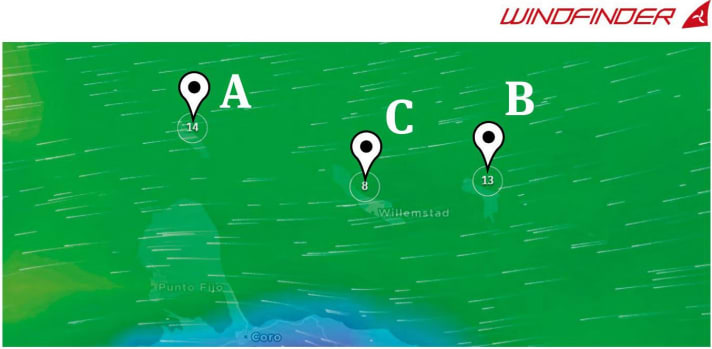Spot Guide ABC Islands: Aruba, Bonaire and Curaçao in a Caribbean island comparison
SURF Redaktion
· 07.03.2023






We are about 8,000 kilometres from Amsterdam - in the tropical part of the Netherlands, as they say. The three islands are actually part of the Kingdom of the Netherlands: Aruba and Curaçao have a separate status as autonomous countries, while Bonaire has been part of a special municipality of the Netherlands since the final dissolution of the political entity of the Netherlands Antilles in 2010 - now lovingly, but officially and at its own request. Where the water is a few degrees warmer and a touch more turquoise than far over in the municipality of Zuidwest-Friesland, a few thousand kilometres to the north-east, on the Ijsselmeer. The official languages are both Dutch and the mixed language Papiamento - the ABC islands are a rather exotic part of a European kingdom in the middle of the Caribbean, with tropical temperatures and, above all, the north-east trade wind, which guarantees constant wind for six months of the year.
You can find the best windsurfing spots on the islands here:

Spot Info Aruba, Bonaire and Curaçao
Wind, weather and neoprene recommendation
The ABC Islands have a very mild climate with temperatures between 21 and 35 degrees - combined with the warm waters of the Caribbean Sea, which quickly reach bathtub temperature in the shallower lagoons. The wind season lasts roughly from December to August, with the strongest winds between February and July, when the trade winds from the east reach 15 to 30 knots. In general, the wind is already very good in the mornings, easing slightly towards midday and picking up again around 3 pm. This means you can take a relaxed lunch break between sessions.

In July, the wind slowly dies down, then the hurricane season begins and the wind is much less reliable - but it is also true that the best waves hit the islands during this time. On the west coast of Aruba and Bonaire, the wind often blows stronger than at other spots on the ABC islands due to the thermals. In general, the air and water here are so warm that most people can manage with shorts (and Lycra) without any problems. For some frostbite sufferers, a thin shorty or a wetsuit top is the ultimate in comfort during the evening session.
Journey
Direct flights to all three islands depart from Schiphol with KLM or TUI. For those who want to bring their own windsurfing equipment, TUI is the best option - the airline charges 50 euros for a piece of luggage weighing up to 32 kilos. With KLM, on the other hand, the board bag in economy class may only weigh a maximum of 23 kilos. Watch out: Especially on the return flight, at Flamingo Airport on Bonaire, the KLM staff at check-in are usually very strict: they weigh to the nearest kilo, as they have plenty of experience with windsurfers and their excess baggage at the very manageable airport.
Currency
The US dollar is accepted as a means of payment on all three islands - although the official currency on Curaçao is the Antillean guilder (ANG) and on Aruba the florin (Afl), which replaced the guilder there in 1986. All major credit cards are accepted on the ABC islands.
Car and accommodation
To explore the islands and surf different spots, a car is essential on the ABC islands. Taxi journeys (especially with equipment) are expensive, so hiring a car quickly pays for itself. All the spots described below can be reached by a normal car. However, if you are planning a complete island tour on Aruba, for example, you will have to drive off-road in some places - in which case a four-wheel drive can be very useful. As far as accommodation is concerned, the ABC islands are generally well positioned - everyone should be able to find what they are looking for, depending on their budget and needs. However, it is advisable to book well in advance, as capacity is limited, especially on Bonaire during the windy season.

